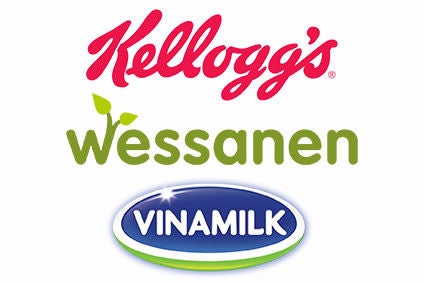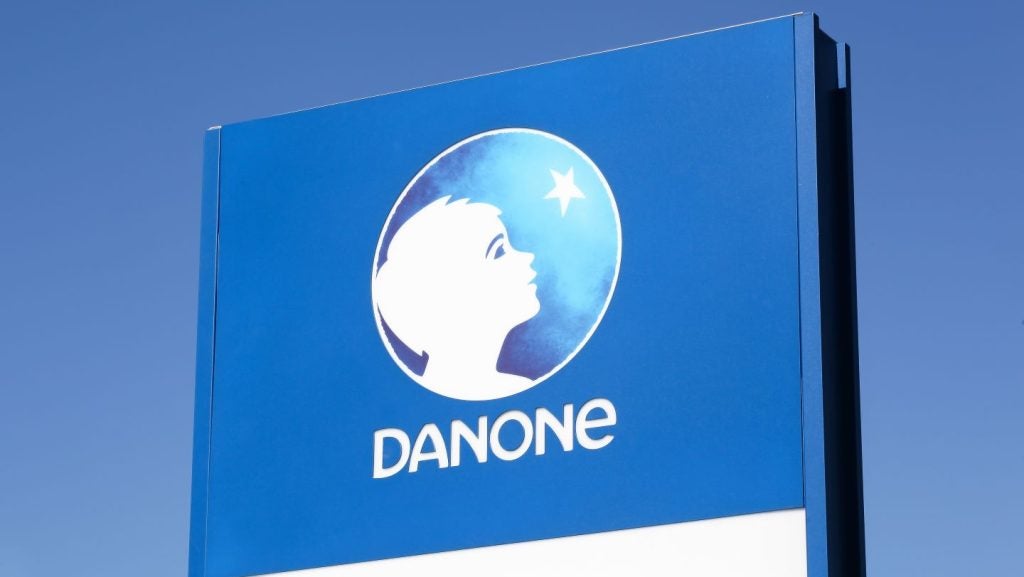
just-food M&A columnist Stefan Kirk runs the rule over the potential deals that could be struck in the food industry in 2016 – and puts forward three companies that could be targets.
2016 is set to be another year of strong M&A activity and high valuations in the food sector around the world. We have identified three transactions that could or should happen this year across three key drivers behind M&A – consolidation of mature businesses, sustainable foods and emerging market growth.
Why Kellogg is a consolidation target in the US
We believe it is likely another consolidation play will occur, involving one of the food majors in the US, following in the pattern of the deals conducted by 3G Capital and Berkshire Hathaway in the last three years with HJ Heinz and Kraft Foods.
Is General Mills still the main lame duck and takeover candidate in that space? It must be admitted the Cheerios maker’s performance has rallied somewhat in recent months, with reported operating profit for the six months to the second quarter of its 2015/16 financial year growing by over 40%, to reach US$1.6bn. The group’s cost-cutting measures, including factory closures, are starting to pay off.
General Mills is also bidding to revitalise its portfolio through M&A. Last year, the company offloaded its mature Green Giant branded vegetables business to B&G Foods, a year after it acquired the high-growth Annie’s business. The purchase consideration was similar in both cases at around $800m. Now that’s what you call a balanced M&A strategy in action.
See Also:
Arguably a more vulnerable US food major at this time is Kellogg. In contrast to General Mills, the Special K-to-Pringles group’s latest financial report (for the first nine months of 2015) booked a 22% drop in reported operating profit to $1.1bn.
How well do you really know your competitors?
Access the most comprehensive Company Profiles on the market, powered by GlobalData. Save hours of research. Gain competitive edge.

Thank you!
Your download email will arrive shortly
Not ready to buy yet? Download a free sample
We are confident about the unique quality of our Company Profiles. However, we want you to make the most beneficial decision for your business, so we offer a free sample that you can download by submitting the below form
By GlobalDataKellogg pointed to adverse currency translations as being largely to blame for the decrease in profits. However, the group could be doing more to diversify its earnings through M&A activity. In the time General Mills has bought Annie’s and sold Green Giant, (and snapped up Brazilian yoghurt group Carolina) Kellogg has acquired two relatively small businesses in Egypt and bought half of a distribution business in west Africa as part of a venture in the region.
When weighing up consolidation-driven M&A in the US food sector, Kellogg is one to watch in 2016. The potential buyers include, of course, the acquisition vehicle managed by 3G and Berkshire Hathaway, plus possibly Nomad Foods, to the extent its ambitions stretch from frozen to ambient foods.
Wessanen in the sustainable space in Europe
Long-suffering Wessanen has completed its bid to reshape itself in the last year or so, with the Netherlands-based group now a pure-play organic and healthy foods company enjoying rising profitability and top-line growth, and with balance sheet strength for add-on acquisitions (see profile).
Wessanen’s long-term positioning is very enviable for the legacy food majors. Take for example what appears to be the Isola Bio and Kallo maker’s key innovation themes – meat alternatives, milk alternatives, healthy snacking and healthy breakfast – which read like a wish-list for any modern, balanced ambient foods strategy.
Most of Wessanen’s ordinary shares are bearer shares, so it is not clear who the significant shareholders are. However, it is a majority free-float company, with an estimated 80% of shares held by institutional investors, so the group is likely to attract the continuous attention of potential acquirers in 2016, especially given the precedent of Annie’s in the US in late 2014.
Annie’s has a similar business model to Wessanen, based on a diversified portfolio of natural and organic branded products. General Mills paid around four times sales for that business which, if applied to Wessanen, would result is a valuation of around EUR2bn (US$2.17bn) – more than three times the group’s current market capitalisation of around EUR600m.
Even if we were to take a more down-to-earth valuation multiple, such as the reported 17 times EBITDA Snyder’s-Lance has agreed to pay for fellow US snacks player Diamond Foods, then the resulting price would translate into a textbook 30% premium over Wessanen’s market capitalisation (see valuation).
Vinamilk a macro-growth story in Asia
Moving across to Asia, a transaction that could happen early this year is the sale of a controlling 45% stake in Vinamilk – Vietnam’s largest dairy group – by the country’s government through its investment vehicle SCIC. The plan for that sale was announced in October, so a privatisation tender process should already be ongoing.
The Vietnamese economy is dynamic, with annual GDP rising on average 6.5% since 2000. It is a country with over 90m inhabitants, where foreign investment, exports and the middle class are all growing. Within that context, Vinamilk’s revenues and operating profit both grew in the strong double-digits in the third quarter of 2015, the most recent quarter for which data is available.
Vinamilk fits the the profile of a privatisation that should attract a who’s who of the big global dairy players, including Nestle and FrieslandCampina, two companies that already have a presence in the Vietnamese dairy market.
The largest single foreign shareholder of Vinamilk is the Singapore conglomerate Fraser and Neave, with a stake of around 10%. By acquiring SCIC’s 45% stake, any new strategic investor will have effective control of Vinamilk, without breaching the politically-sensitive 50% threshold.




